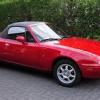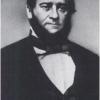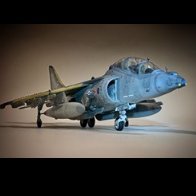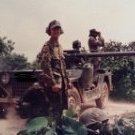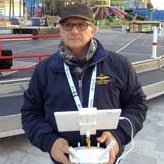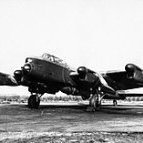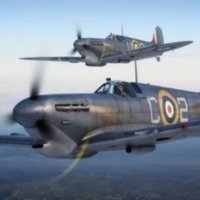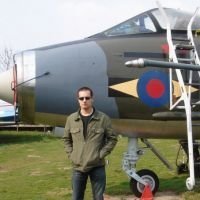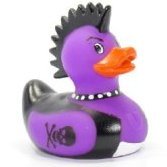Search the Community
Showing results for tags 'AIrfix'.
-
I have been struggling slightly with modelling mojo - due mainly to workloads and family commitments. I am determined to get building again and complete my first GB for 2024. My chosen kit is the Airfix 1/72 Mig-17F from: I pulled this out of the stash last night. Who knows I may even do the Skyhawk as well (I will obviously do another thread if I do). I seem to recall some issues with this kit shape wise but it looks fairly Mig like to me... I thought I had some other decals for this but now can't find them and the Xtradecal set I wanted appears to be out of stock. Ideally I would do a middle east based plane (fits with one of my collection themes) but the North Korean scheme shown above will do just fine 😉 A bit of history from Wikipedia... The Mikoyan-Gurevich MiG-17 (NATO reporting name: Fresco) is a high-subsonic fighter aircraft produced in the Soviet Union from 1952 and was operated by air forces internationally. The MiG-17 was license-built in China as the Shenyang J-5 and Poland as the PZL-Mielec Lim-6. The MiG-17 is still being used by the North Korean air force in the present day and has seen combat in the Middle East and Asia. The MiG-17 was an advanced modification of the MiG-15 aircraft produced by the Soviet Union during the Korean War. Production of the MiG-17 was too late for use in that conflict and was first used in the Second Taiwan Strait Crisis in 1958. While the MiG-17 was designed to shoot down slower American bombers, it showed surprising success when used by North Vietnamese pilots to combat American fighters and fighter-bombers during the Vietnam War, nearly a decade after its initial design. This was due to the MiG-17 being more agile and manoeuvrable than the American F-4 Phantom and F-105 Thunderchief, which were focused on speed and long range combat, as well as the fact that MiG-17 was armed with a gun, which initial models of the F-4 Phantom lacked. The obligatory sprue shot: As always all comments welcome. Dave
- 10 replies
-
- 14
-

-
New tool 1/48th DH.82a Tiger Moth kit - ref. A04104 Release expected in May December 2019 February 2020. Source: https://www.airfix.com/uk-en/shop/new-for-2019/tiger-moth-1-48.html V.P.
- 185 replies
-
- 14
-

-

-
- Airfix
- Tiger Moth
-
(and 1 more)
Tagged with:
-
It's been some time since I posted a build on here, even longer since I took part in a Group Build but this one has tickled my fancy so, I hope no-one minds me joining with this old kit. The sprues: Should be a simple build, even if I add some bits'n'bobs in the driver's compartment. I may rescribe the panel lines, or I may not. Scalemates tells me this is the 1986 boxing of a kit originally released in 1970. The last 37 years certainly haven't been kind to the stickers (even if they were in register and the tail stripes weren't wrong). No matter, I have plenty in the decals box. I've got some Hurricanes to finish but should start this one at the weekend.
- 34 replies
-
- 19
-

-
Airfix 1:72 Mosquito in the kit scheme of No. 571 Squadron from the Pathfinders. Airbrushed with Vallejo Model Air, weathered with Abteilung 502 oil paints and varnished with Tamiya matt and gloss varnish from a rattle can. Overall the kit went together well. I used a masking set from ASK for the transparencies and CMK resin flaps and elevators. I did a fair bit of scratch building of parts in the interior (such as new radio set replacing the unit supplied with the kit; new bombsight, seat belts with tape and wiring and various gubbins. I also corrected the bomb bay doors, redrilled the red, green and amber lamps and added brake lines to the wheel hubs. I also modified the tailwheel to the anti-shimmy version and added ice guards to the Merlin second stage intakes (though they are a bit out of scale). i also drilled out the wingtip lights to add the green and red bulbs. What went well? Canopy transparencies and masking, learning how to fit aftermarket resin control surfaces (though in retrospect I didnt thin the trailing edges enough); redoing the bulged bomb bay. What could be improved? Interior painting was too thick, my scratch built radio set was not accurate for the airframe in the end (despite spending weeks pontificating on reference drawings in Richard Franks Modellers Datafile); the paintjob could be improved e.g. brush painting the u/c legs was a disaster; i was too heavy handed using the spray can and had to redo the camo template several times resulting in a poor paint finish with dust and hair all over the place. also over did it on the weathering underneath. anyhow thanks for looking Neil
-
Hi all so my next project I am undertaking is one I am very very excited to do. It is the Vickers valiant prototype WB210 conversion for the 1:72 airfix Vickers valiant. The conversion is made by a very talented person, I am sure people have heard of BritJet ( Steve ) it's thanks to him that I can make this absolutely beautiful valiant. I have made a start on this conversion, the first thing is did was to fill in the radome panel lines. the next step I did was to remove the U shaped parts just above the bombbay on both sides then after that I removed the vortex generators from the fin, then the fin intake and then I reshaped the two blisters under the rudder. I actually forgot to reshaped the top of the fin so that is next on the to do list.
- 34 replies
-
- 12
-

-
- Airfix
- Vickers Valiant
-
(and 1 more)
Tagged with:
-
The last 3 months have been nothing short of hectic, but with Telford now done for another year and no builds on the bench, I can build something for myself (kind of)! Airfix's brand new Me-410 is up. Massive thanks to Phoenix Scale Publications for providing this kit for a build review for the mag at some point in the future. I never make things easy for myself though as this kit will be back dated to a standard Me-410A-1, rather than having the /U2 or /U4 modifications as modelled in the kit plastic. It's an easy fix, but I'll provide info on that at a later stage. For now, basic cockpit construction is complete with all base colours down. The only cockpit decals used were the ones for the side panels in the cockpit. Everything else was hand painted after the airbrushing of the base colours. these being Tamiya XF-63 and SMS PL179 RLM02. The decals should arrive soon from Hannants and I'll be doing this awesome scheme as shown in the pictures. Invaluable references from the Valiant Wings Publishing book as well!
- 30 replies
-
- 24
-

-
First, the photos... Here's my attempt at the 1/72 Airfix S.2B Buccaneer. For a kit which has had rave reviews, I had mixed feelings on mine, not helped by the fact that one of the wings was quite warped in the box, and I never managed to get it entirely straight. A couple of other fit issues around the big fuselage components left a bit of a messy finish, though I'm sure a more skilled modeller would have done a better job. That said... some components went together really nicely and were quite cleverly engineered, and the surface detail is pretty good too. It was built almost totally OOB, with the exception of some Eduard etch for the cockpit, and those Quickboost intake FOD covers. Paints were Hataka acrylic, mostly airbrushed but a bit of detail added by brush. I wanted to weather it enough to represent a late-life, well worn example, and this was mostly done with oils (a little clay wash shading too). To get that properly worn, faded look, the whole thing was sprayed with Windsor & Newton Galeria matt acrylic varnish. When they say “matt” they really mean it! The flattest finish I’ve ever used. I deviated from the Airfix guide on the weapons colours, and went for 'live' markings on the Paveway and the AIM-9L. All photographed on the dining room table, as usual... the 'night' ones were done with just two torches for illumination. The hangar backdrop photo is courtesy of Nick Challoner, and the first generic airfield backdrop was a large print made after purchasing the shot from Shutterstock. Overall I'm fairly happy with it for the small scale - I think it was NavyBird who said how unforgiving close-up photos of small scale models can be, and he's right...don't zoom in too closely! Thanks for looking.
- 18 replies
-
- 66
-

-

-
After slogging through a big build of a short run kit for the past few weekends, I needed a little mojo-building exercise to get my head back in the game. Going through the stash I discovered a newer-tooled Airfix Spitfire Vc that I'd bought for less than $10USD some time ago. Whenever I see a new Airfix kit on sale for less than a tenner, I instinctively buy it for just such an occasion. I also had an Eduard “Zoom” cockpit set and canopy masks so the choice to build this little Spit was a no-brainer. This was the result of a weekend build-a-thon: 74556352-FF48-4229-B930-6F4416054119 by Evan Bailly, on Flickr Also present in the stash was a multi-topic decal set from DK Decals that I'd purchased for a previously built P-47. In the set were the markings of two RAAF Spitfire Vc airframes, and I chose A58-180 for its odd nose art of a bull chomping on a rising sun flag. Helped by a few older threads here on BritModeller, I think I got reasonably close to the subject for a mostly out of the box build. F73F86FC-FE78-4401-8E9F-5028D34EEB64 by Evan Bailly, on Flickr Paints were all from AK's Real Colors range, RC340 for the RAAF Foliage Green, and RC241 for the RAAF Sky Blue. The dark brown was mostly standard RC287 RAF Dark Earth but the areas where the the original aircraft had been over sprayed (over the RAF roundels, and the RAAF's earlier Squadron and tail empennage markings) were a mix of dark earth and RC081 to provide a little tonal difference. Weathering came from a sponge on a stick for chipping and artists oils for washes and filters. To Arifix's plastic I added the previously mentioned Eduard "Zoom" cockpit details and, made from wire, the rod-type IFF antenna under the starboard wing particular to RAAF spitfires. Other than those the kit was built out of the box and according to Airfix's instructions. Total build time: two evenings and a few Sunday morning minutes for cleanup and photos. 99DC7EB6-E152-4858-BFFB-D4908FBB9120 by Evan Bailly, on Flickr 1AE774CF-3F67-4D9F-8035-97400CC43C34 by Evan Bailly, on Flickr 40B90BE7-20F0-4DA7-93AD-258C14752275 by Evan Bailly, on Flickr 5456F7C0-332F-482C-9435-70996E14108C by Evan Bailly, on Flickr
- 10 replies
-
- 32
-

-

-
Another new work in progress despite numerous build. I have decided that I will start the new year 2024 with something different from what I have been building; a ship…..a tiny one……make difficult with tiny PE parts. Wanted to build a Falklands ship but the conversion will only increase the difficulty level. So, I shall stay with the original version. This is my first serious ship building. The last few times were built during school days, built out of the box. I bought the Atlantic Models PE set and there are some new structures added on some levels. Will probably need to dig further for some pictures.
- 34 replies
-
- 12
-

-
- Airfix
- HMS Fearless
-
(and 1 more)
Tagged with:
-
Hi all, I'm tearing my hair out here. I'd like to know who the artist of this specific box art was. It was a kit I had a good 15 years ago or so (roughly that is - memory is poor!) and would love an A4 or A3 print of it possibly. Please can someone point my in the right direction? I don't think it's Roy Cross but I'm happy to be proven wrong but I just can't find any details around it anywhere!!! Thanks!
-
Good morning everyone For this beautiful first GB 2024, I chose an English plane that I love very much: an Airfix Bristol Beaufighter Mk.I. At the moment, my only aftermarket set to use is a CMK cockpit... later we'll see what I can add........Happy GB everyone Ettore 🍡
-
Well I think I'm probably being over ambitious with thinking I may get these two builds done but I will try my hardest that's for sure. Will start with the Blenheim, I have the mask set and paints already and if I get time I will get Whitley done as well. Both will most likely be finished as the aircraft from the box art, I will definitely do the coastal command Whitley, perhaps a different scheme for the Blenheim. Looking forward to getting started!
- 7 replies
-
- 19
-

-
- Blenheim Mk.IF
- Whitley
-
(and 1 more)
Tagged with:
-
This is a piece I wrote on Airfix’s little 1/1200 scale Bismarck for the IPMS/USA Journal many years ago. At the time – well before its 2012 re-release as part of the “Sink the Bismarck” set – the 1973 model was a rare kit. Airfix 1/1200 Bismarck (kit 4204) Perhaps the most famous warship of all time, the German battleship Bismarck is one of those ships whose legend has come to overshadow reality. Displacing more than 50,000 tons and shipping eight massive 15 inch guns as well as an imposing array of secondary artillery, Bismarck was indeed an awesome weapon. According to a 1942 U.S. Office of Naval Intelligence assessment, “Bismarck was probably as formidable as any battleship then in service”. Yet the ship’s major claim to fame, the sinking of the HMS Hood and mauling the battleship Prince of Wales, was a bit of a fluke. The German task force was actually sailing under orders to avoid British warships in order to focus on its real mission, the destruction of merchant shipping. As it happened they were unable to elude the Royal Navy, and the epic pursuit, Battle of the Denmark Strait, and the Bismarck’s dramatic final destruction have earned the ship a kind of mythical status. Still, despite its immense firepower and the valor of its crew, the Bismarck was, in the final analysis, a dinosaur. Built and deployed at staggering cost, Germany’s most famous battleship failed utterly in its primary mission: Bismarck never sank a single merchant ship. By contrast, the U-Boats, smaller and comparatively cheap to build, were to sink over 5,000 merchant ships and nearly starve Britain out of the war. Had Germany taken to heart the lessons of the First World War and abandoned the useless big gun fleet in favor of the U-Boat arm, the Kriegsmarine could have used its over 8,300 battleship sailors to man an additional 166 U-boats at the outset of the conflict—enough to quadruple the vital submarine force at a time when Britain was most vulnerable. Splendid as they were, the very size, power, and cost of the mighty Bismarck and the other battleships may well have cost Germany the critical Battle of the Atlantic. This kit was one of Airfix’s first 1/1200 “Naval History Series” clip-together models issued in 1973. I hadn’t even heard of this series until recently; apparently there was also a Prinz Eugen, Hood, Ark Royal, Suffolk, and a Tribal class destroyer (all ships involved in the Bismarck chase). These kits have long been out of production, but you can often find them on auction sites fairly cheap (I paid less than ten bucks for this one). The 50 gray plastic parts assemble into a basic but good looking little battleship. The waterline hull is a single part with a solid bottom and separate single-piece main deck, so there are none of those annoying mid-deck seams so common on larger scale kits. This is fortunate since the raised deck planking is beautifully delicate. In fact, it is some of the best I’ve seen in any scale—they really got it right way back in 1973! I wish more model manufacturers had continued this style of depiction for planked decks, so much more effective than the overdone trench lines so often seen today. Assorted deck hardware is also well done with bitts, hatches, vents, and other details sharply depicted. Unfortunately, the model overall doesn’t quite capture the graceful lines of the original. The length/beam dimensions are right, but the hull form is too pudgy fore and aft. Also, the armor belt is too low, and the numerous portholes are missing. Worse, the funnel, superstructures and aft turrets are placed just a little too far back. The problem isn’t too noticeable until you get to the fantail, which is about 20 scale feet too short as a result. The superstructure is simplified. The distinctive spherical hoods of the 4m type SL-8 antiaircraft directors are molded integrally with the superstructure and represented as rounded tops on the mounts rather than as spherical shapes. Not very good. Also, the aft mounts shouldn’t have the hoods at all (unless you intend to build the model as the Tirpitz). The two-part funnel is hollow with an open grating represented on the top. Main turrets are ok, except that the barrels are about 6 scale feet too long and the rangefinder hoods extend too far down the sides—but they are fixable. The 150mm secondary turrets have simplified shapes and the barrels are also too long. In addition, the ‘midships pair of secondary mounts just forward of the funnel should have rangefinder “ears”. Smaller parts vary in quality from fair to excellent. The tiny Arado Ar-196 floatplane is only so-so with no floats and an overlarge canopy, but the aircraft/boat handling cranes are fairly good. The 10.5m rangefinders atop the superstructures are delicately rendered, as are the masts. The best parts are the ship’s boats, 37mm, and 105mm antiaircraft guns, which rival comparable parts in many larger scale kits—if this kit were more readily available I would be tempted to raid these to outfit a Revell 1/1200 scale Scharnhorst or Gneisenau. Incidentally, this kit is unrelated to the 1/1200 scale Bismarck/Tirpitz kits currently marketed by Revell Germany as part of their “Miniships” line. Those models seem to be reissues of the old Casadio/ESCI kit, which was mediocre at best. Though harder to find, Airfix’s model is much better. This is a clip-together model, so assembly was a piece of cake. The deck, hull, superstructure, and funnel went together in a matter of minutes. The kit parts look decent, but the bulkheads and hull sides are almost completely featureless. The only details in evidence are the numerous “Aztec temple” style inclined ladders on the decks. I’ve never been a fan of these, but in this small scale they actually don’t look too bad, so I left them. To add a bit of further visual interest to the plain bulkheads I added some of the many portholes with which Bismarck was festooned. Using line drawings of the ship reduced to 1/1200 scale on a copier as a guide, I drilled out over 140 of these things using a tiny #77 bit chucked into my X-acto. These little scuttles were a simple (if tedious) way to busy up the highly visible surfaces. It was not a very difficult operation, just requiring a bit of care to keep the holes evenly spaced and in line. The wood decks were excellent, with delicate molded plank detail and various hatches, breakwaters, and assorted deck gear cleanly rendered. One small problem here was on the second deck between forward superstructure and aircraft catapult, which Airfix had depicted as wood. It was actually unplanked steel on the real ship, but a little sanding and it was good to go. The configuration of the ground tackle and forecastle deck was also a little off from my references, so I removed the molded anchor chains and corrected the area as best I could. Airfix did not provide anchors, so I fitted the ship with new photoetch anchors and chains (Tom’s Modelworks 1/700 scale photoetched brass anchor set #724) both here and at the stern. Next came the weapons. The main 15 inch turrets, molded integrally with the guns, came first. These weren’t perfectly accurate, but the only changes made were to reduce the thickness of the rangefinder “ears” (the kit parts came down too far) and to hollow out the muzzles using the tip of a new #11 X-acto blade. An additional alteration was to remove the rangefinders entirely from turret Anton, the forward turret. Airfix depicted these rangefinders in place, which was correct for the ship as built. However, during initial trials the Germans found them to be useless in that position due to seas over the bow, and they soon removed them. The smaller 150mm secondary turrets were similar to the main guns, except I didn’t hollow out the muzzles (a dab of black paint at the ends is enough to fool the eye in 1/1200). The 105mm and 37mm antiaircraft guns were fine out of the box, just needing a minimum amount of mold clean up. The kit omits the 20mm single mounts entirely, but they would have been almost invisible in this very small scale anyway. Sensors and fire control fittings varied in quality. The 10.5m rangefinders atop the superstructures were nicely depicted, the only improvements here being to add small photoetched screen material to the radar faces. The armored domes for the type 1937 rangefinders, on the other hand, were pretty poor. I didn’t take the trouble to replace them with corrected spherical shapes, but I did remove the domes from the aft mounts. The Airfix mold makers probably used builder’s plans showing these in place, but in fact Bismarck was rushed into service and the planned domes were never fitted to these positions. I removed them and filled the empty mounts with parts adapted from spare 1/700 Japanese destroyer rangefinders. The parts box also yielded searchlights to fill empty positions near the mainmast and on the main tower. The ship’s boats, cranes, and aircraft were ok from the kit, if lacking in detail. The masts weren’t bad either, except that the mainmast was way too tall. I ended up using only the lower half of it and fabricating the upper part from portions of the kit part, copper wire, and leftover photoetch bits. The other masts and rigging were made up in the same way. Some additional detail for the aircraft catapult and the two small triangular cranes on the after part of the funnel were also 1/700 scale photoetch leftovers pressed into service. The most fiddly part of the build was the railing. Now 1/1200 scale is very small indeed (1 inch equals 100 feet!), and I’d never tried to rail a ship this small before. Still, it would look very cool if I could pull it off, so I ordered the only set I knew of designed for such a small scale, Tom’s Modelworks’ 1/1250 3-bar photoetch brass railing. When the rails arrived, I couldn’t believe it! These things were unbelievably fine, consistent, and in-scale. The shiny brass parts were just beautiful, and I couldn’t wait to try them out. I painted them up, cut out a test section and glued it on and they looked, well… disappointing. What happened? The rails were straight, consistent, and in-scale as expected. The problem was, these things were actually too fine. Yeah, they were correct, but I could barely see those test runs once they were on! I decided to try another approach. I had some 1/600 scale railing on hand (Gold Medal Models Merchant Ship detail set #600-2), so I took a length of 4-bar rails from the set and cut them down lengthwise to create 2-bar rails a little less than 1/16th of an inch high. Though still small, these rails were somewhat less delicate than the brass set—and looked much better. The stainless steel photoetch was not easy to cut (my scissors were junk by the end of this project), but these rails worked great. I liked this tougher material, which was less prone to damage than the softer brass. Methodically trimming each run down was not the most exciting of tasks, but once cut the rails went on without any problems. And I was satisfied with the final effect: busy, delicate, yet still clearly visible, even if you do have to move in close to see it! The Bismarck carried a number of paint schemes during its short existence, but its most colorful was the scheme worn between March and May 1941 while working up in the Baltic Sea. The colors consisted of Hellgrau 50 (aka Silbergrau, or silver gray) superstructure and upper works and Dunkelgrau 51 (aka Fehgrau, or squirrel gray) hull. Dunkelgrau 53 (aka Anthrazitgrau, or anthracite gray) was painted on the hull ends fore and aft in an attempt to shorten the apparent length of the vessel, complete with white false wakes to enhance the illusion. The primary and secondary turrets were Silbergrau with dark gray tops (not maroon as is sometimes depicted). The teak decks were left unpainted wood, and the steel decks were dark gray. Aerial recognition panels, each with a large black swastika inside a white circle on red panel, were painted on the main deck fore and aft. The most distinctive aspects of the scheme were large, angular black and white stripes across the hull and superstructure. I don’t know how these were supposed to work; maybe they were to disrupt directional observation, or perhaps the black and white bands were supposed somehow to blend visually with the background at a distance, or they might have been intended to make identifying the ship more difficult by obscuring the ship’s configuration. In any case, U.S. Naval intelligence assessment of the stripes’ effectiveness as camouflage was scathing, dismissing them as “ineffective.” They still looked kinda cool though! Finding paints to approximate the various colors was not difficult. Model Master Italian Blue Gray (lightened) was a reasonable match for Silbergrau, while Model Master Neutral Gray worked for Fehgrau and Model Master Gunship Gray stood in for Anthrazitgrau. I used a lightened Model Master Armor Sand for the wood decks, Model Master French Khaki for the floatplane, and the boats were painted with Model Master Military Brown. Out of sheer laziness I brush painted the entire project, but if I were to do it again I would use the airbrush to get a more even finish. Bridge windows were little squares cut from black decal scraps as were the vision slits in the armored tower. The Hakenkreuz air recognition markings are decals from I-94 Enterprises www.I-94enterprises.com (product GR-105, German WWII Battle and Air Recognition Flags for 20mm-1/285 armor). Intended for armor models, they aren’t 100% correct for the Bismarck, as they should cover a larger deck area and the swastikas shouldn’t have the quarter turn, but they still look good. I had originally intended to use larger, more appropriately sized panels adapted from a 1/48 aircraft decal, but the larger size tended to highlight the model’s too-short fantail. These markings actually worked better! Airfix’s little 1/1200 scale Bismarck is an attractive model, noticeably superior to the more widely available Revell “Miniships” Bismarck/Tirpitz. If you want a small scale Bismarck for your fleet (and aren’t bothered by a few inaccuracies), this kit is an inexpensive, fun choice! References http://www.kbismarck.com/ A terrific website with info on all things Bismarck including color profiles of the ship and a great model gallery. http://www.bismarck-class.dk/ Another excellent website with lots of Bismarck info. http://www.history.navy.mil/faqs/faq118-2.htm An interesting summary of the Bismarck sortie prepared by the U.S. Office of Naval Intelligence in 1942.
-
Supermarine Spitfire Mk.Vc, BR498 PP-H, Wing Co. Peter Prosser-Hanks, Luqa Wing, Luqa, Malta, October 1942 Subject; Supermarine Spitfire Mk.Vc, non-tropicalised, x2 Hispano Suiza 20mm cannons and x4 Browning .303's. Manufacturer; Airfix Scale; 1/72 Kit number; A02108A Aftermarket; Barracuda resin spinner, Kitsworld decals. Paints; Exterior upper, AK Real Colour RAF Extra Dark Sea Grey and Dark Slate Grey. Lower, RAF Azure Blue. Mr Finishing Surfacer White and X7 on spinner. Interior RAF Interior Grey Green and Xtreme Metal Matt Aluminium. Various Tamiya X, XF and LP. Posca pens for detailing. Primer; Mr Surfacer 1200 Varnish; AK Gauzy Shine Agent and Tamiya X35 Semi-Gloss. Weathering; Flory Dark Dirt and Grime wash, Abteilung oils, Ammo North Africa pigment and Tamiya weathering palettes. Extras; Prym Knitting Elastic for the antenna wire.
- 11 replies
-
- 41
-

-
Vickers Wellington Mk.IA/C (A08019A) 1:72 Airfix The Wellington began development in the mid-30s, utilising a technology designed by Barnes Wallis, the Geodetic airframe structure, which was a weight-saving method of creating a diamond-shaped framework that was then covered with fabric layers that were doped to shrink and give the surface strength. As the clouds of war began to gather, the specification was changed that required a more powerful engine, and the specification also saw two competitors reach service in the shape of the Hampden and Whitley bombers, which were superseded very early on in the war, while the Wellington carried on in service until the end of hostilities. Production also continued throughout the war, despite the Wellington being outclassed by the four-engined heavies that came on stream early in the war. The first prototype flew in 1936, and the second prototype was amended following issues discovered, one of which resulted in the loss of the first prototype and the death of the navigator on board. More changes were made in time for the first production batch that was designated Mk.I, which were followed by the Mk.IA that changed the turrets to Nash & Thompson, strengthening and moving the landing gear forward, with the facility engineered in to take either the Pegasus XVIII or Rolls-Royce Merlins, although in practice the Pegasus was used for all 187 of the Mk.IA, some of which were built down the road from my home, at Broughton on the outskirts of Chester. The Mk.IC followed, and added waist gunner positions, and some of this mark were used by Coastal Command as the GR.Mk.VIII. Later marks used various engines, including Merlins, Bristol Hercules, and P&W Twin Wasp 2800s. The flexibility of the Wellington was seen in the slightly larger Warwick that still looked like a Wellington despite its many differences. The Wellington was also used as a torpedo bomber, Air-Sea Rescue, Submarine hunter, and transport for troops and equipment. After the war, many were converted to other duties, and used as the basis for experimental conversions, while others ended their days towing targets for more modern aircraft or anti-aircraft crews to shoot at. The Kit This is a reboxing of the 2018 tooling of this well-known aircraft, with new decals to depict different airframes from the original. The kit arrives in a red-themed top-opening box, and inside are six sprues of dark grey styrene, a clear sprue, a sheet of decals, and the instruction booklet that is printed in spot colour, with a sheet of glossy colour-printed decal and painting profiles for both options slipped between the pages. Detail is excellent, with extensive reproduction of the Geodetic framework inside and out. The exterior shows the framework pressing through the fabric outer surface, while inside the fuselage the frames themselves are depicted, including where they run across the windows, one of the defining elements of this unusual aircraft. The rest of the detail is just as good, including optional interior details that can be left out by the modeller in a hurry, or doubts the parts will be seen on the finished model, and this is the theme of the first page of the instructions, showing all those parts in green. Construction begins with the internal floor of the fuselage, which is partly geodetic itself, with solid sections where the majority of crew footfall will be. A bulkhead that is also criss-crossed with frames is added to the front end, and joined by the radio equipment that has a small table moulded into the lower edge. A half-bulkhead is also included with a moulded-in seat for the radio operator, then a short, angled bulkhead creates the front of the bomb bay under the floor, adding another at the rear, which is moulded in clear plastic and should have two rectangular windows left clear once it is painted, as shown in a scrap diagram. The pilot’s seat is glued to the opposite side of the radio bulkhead on two supports, with a short length of floor holding a side console and receiving a bow-tie control column, noting that the floor section is tilted slightly down to the front, as shown in a scrap diagram nearby. The crew’s Elsan toilet is fitted on a small spur of floor near the rear of the aircraft, leaving only the rear gunner in trouble if there’s an ‘incident’ there. The fuselage halves are prepared differently depending on whether you intend to pose the bomb bay open or closed. To close the bay, the six short bay doors on either side should be trimmed from the parts, cutting out three flash over holes under the aft fuselage, and removing a small section of the fairing that smooths the airflow over the nose turret to fit the new turret fittings. There is some serious detail painting needed to pick out the framework from the interior of the fabric skin of the aircraft, which might look like hard work, but if you first spray the metallics, and cut some strip masks to protect them when you spray the red dope surface, you might save some time and touching up of wobbly hand-painted areas. A rack of oxygen bottles and a well-detailed stretcher bed are fixed to the port side, along with another piece of equipment, all of which are shown from both sides of the windows over which they are mounted – a timely reminder that the parts need painting on both sides before installation. The floor assembly is glued into the port fuselage half, and is joined by the instrument panel, which has rudder pedals moulded-in, and five decals that are supplied instead of raised panel details. A squared oval bulkhead is fitted in the nose in front of the instrument panel, and another D-shaped bulkhead is mounted some way behind the radio room, adding a table between the two walls, and fixing a chair to the floor on a couple of pegs, then another D-shaped bulkhead fits further back with an equipment package in the bay it creates, then two curtain-like inverted V parts support the fuselage at the rear of the bomb bay, adding two more bulkheads in the tail, and joining a narrow piece of floor between the main floor and the first of the tail bulkheads, and in the nose, a panel that can be fitted open or closed as you wish, with two scrap diagrams showing the correct arrangement. The nose and tail turrets have their rings completed by adding inserts to them, with more equipment and cylinders fitted in the starboard fuselage before the two are mated, trapping a substantial spar between them, and fitting the bomb bay door part in position if you plan to close the bay. Your next choice is wheels up or down. To pose the wheels down, you start with two inner cowling sides with a piece of girder-work trapped between them, which is then slotted into the lower wing from within, adding a pair of clear landing lights whilst in the neighbourhood. The wings are then closed around the assembly, adding the ailerons, which can be posed offset if you wish. The firewall and bay doors close the cowlings for those posing their model in-flight, but if you are leaving the wheels down, the twin gear legs and a retraction yoke are inserted into the bay before fitting the firewall, sliding the wings over the spars, and gluing them in place. For wheels up, another bay part covers the tail-wheel bay, but for wheels down the wheel with integral yoke is fixed in place, and a single part forms both bay doors, on a double carrier that fits inside the bay area. The tail fin is separate from the fuselage, as is the rudder, both made from two halves each, slotting into the tail in the usual manner. The elevators are both two parts each, and these have separate flying surfaces that can be offset, as can the rudder. Without engines, the Wimpy isn’t going very far, so Airfix have supplied the radial engines are single well-detailed parts that mount on a tapered convex fairing, with the cowling slid over the engine, locating on exhaust collector pipes that hold it at the correct distance from the lip. If you have left the bomb bay open, the munitions are each made from two halves, with a tab moulded-in to mount them on the highly detailed bay divider walls, which have the inner doors moulded-in. The two painted and assembled dividers are then installed along the length of the bay, using tabs and slots to locate them firmly in position. The defensive turrets are each made up from two halves of the armament and the turret ring, sliding the clear glazing over the gun barrels, and closing in the rear with a styrene part, with doors engraved where the crewmen would enter and exit. They slot into position, and adding clear parts continues, filling in the large rectangular panels on the sides of the nose first, putting the astrodome on the fuselage between the wing roots, plus the long side windows and a diamond window in the nose, whilst covering the trapezoid side gunner windows with styrene parts, as the aircraft depicted didn’t have weapons fitted. The canopy is installed later, and can have a side window posed open by using a different clear part, finishing by putting the bomb aimer’s glazing under the nose. The main gear wheels are made from two halves, and have a small flat spot at the bottom to portray the aircraft’s weight on the tyres, splaying the legs out to insert them between the two struts. Underneath the aircraft, a towel-rail antenna is fixed into the three holes opened earlier, with a pitot probe under the starboard wing, plus exhausts on the engine cowlings, and a long fuel-jettison pipe is inserted into holes in the underside of the wings, outboard of the engine nacelles. The three-bladed propellers are moulded as a single part per side, and they are installed on a convex cover that hides a spindle that can allow the prop to remain mobile later, adding a spinner to the centre of the props, and gluing them into the centres of the engines once they are painted and the glue has cured. Under the nose, a crew access ladder is provided for use if you have opened the crew hatch earlier in the build behind the bomb aimer’s window. An aerial mast and faired-in D/F loop are mounted on the spine behind the cockpit, with a short outlet for what appears to be the flare port on the port side at an angle. Markings There are two decal options provided on the sheet, allowing you to build an RAF and a captured airframe in German markings. From the box you can build one of the following: Wellington Mk.IA No.9 Sqn., RAF Honington, Suffolk, England, 18th December 1939 Wellington Mk.IC Luftwaffe, formerly 311 Czech Sqn., 1941 Decals are by Cartograf, which is a guarantee of good registration, sharpness and colour density, with a thin gloss carrier film cut close to the printed areas. For the painted-out roundels of the captured airframe, Airfix have provided templates on the profile pages for you to paint the areas out on the upper wings, which were painted with RLM82 green circles, while the underside was completely repainted yellow, and the fuselage roundels and tail flashes were obliterated by a patches of RLM82, the closest match to Dark Green they could probably find without pulling out their colour chips and fan decks. Conclusion The Wimpy is a well-loved aircraft, and while it wasn’t the best British bomber of WWII, it was flown in large numbers in many guises. The detail in the kit is excellent at this scale, with options to deflect flying surface, pose the wheels up or down, and open the bomb bay if you wish, including bombs to put in there. The decal options are a bit away from the usual too, which helps broaden the appeal further. Highly recommended. Review sample courtesy of
-
Right, a Javelin Jambalaya, and not in the Cajun meaning of the word. I won't be making a stew for dinner. I have three kits of the Javelin (EDIT - four), the Heller T.3, the Airfix "FAW.9" (and that's in quotes for a reason as we will soon see), the Plastyk FAW.9, and the Novo/Frog FAW.9 all in glorious 1:72 scale. Thank the woman above that I don't need to add crazy detail like I did on that big Spitfire. So let's see what we have as raw materials - first, the Airfix "FAW.9" which I purchased at a model show swap meet, but was in its original package and still sealed. The Javelin Illuminati among us (they come out occasionally and are dreadfully frightening) will immediately notice that the grey sprues are in fact those from the Heller T.3 kit, with the tailcone removed from the sprue on the right in the second photo. However, the white and clear sprues are indeed from the Airfix FAW.9 version of the Javelin. Everyone knows that the original T.3 tooling was modified to produce the FAW.9, and it seems that Airfix have mistakenly packaged surplus T.3 sprues (but correctly snipping off the tailcone) in my kit. Oops. It would be rather difficult at this stage to make an FAW.9 out of this kit. But I also have this kit from Plastyk in Poland: I'm told that this kit is based on the second Frog tooling of the Javelin, but I don't have that so I can't compare. The sprue layout bears no resemblance to the Frog kit as seen here in the Frog Museum. I've seen a few very nice builds of this kit, but it is quite basic. So maybe. Now, I also have one of these babies, along with a Print Scale decal sheet to replace the nicely curled and yellowed one that was unearthed at some archaeological dig and packaged with the plastic: The sprues from the Heller kit look just like the Airfix sprues above, except they're in a yukky silver styrene and, of course, include the correct T.3 tailcone. Oh, right, aftermarket. I've assembled some, but maybe not enough. What to do? If I had another T.3 tailcone, I could build two T.3s and an FAW.9, but I really don't need to have three Javelins in my display case. Two sounds like a good number. I'll give this some thought and make a plan. The Airwaves airbrake PE set is designed for the Heller/Airfix kit, but might be useful for Plastyk. I will need another to make two models. The other Airwaves set is for the Airfix FAW.9, but could most likely be used on a T.3 and few would notice. I don't think there is a set for the T.3 like this, so I would need another of those too. More aftermarket tyres and pitot tubes will be easy to acquire. Oh, I suspect I will need to source some ejection seats. Martin-Baker Mk.3J for the FAW.9, but which mark for the T.3? The easiest route is to build a T.3 from the grey Airfix sprues (I hate that silver styrene in the Heller kit) and an FAW.9 from Plastyk. Easy is a relative term here, as the Plastyk kit looks like it need a lot of help, where the Heller kit maybe needs just "some" help. First, though, I want to find some layout drawings that are reasonably correct to see what I'm starting with. I have the stencil placement drawing that came with the Airfix 1:48 kit, and I suspect that is pretty good for an FAW.9. Drawings for the T.3 I'm still looking for. I'm not sure why I always make things difficult for myself, but I think this will be a fun project! Cheers, Bill PS. I do like the fancy paint job on that red and white FAW.9. I'm a stickler for that kind of stuff.
-
Hopefully a simple and quick question! I’ve got the Airfix ‘Mighty Hunter’ in the stash and lockdown is making me look at getting on with it.. My question is during the time 51 Squadron were based at RAF Wyton can someone clarify a timeline for the following: IFR probes and colour schemes. Namely did the white / light grey scheme pre date IFR probes being fitted? By the time 51 Squadron moved to Waddington from Wyton were the aircraft in the two tone grey scheme, or did that happen after the move? Thanks in advance
-
Hello all, This is my DHC-2 Beaver, as operated by the Royal Lao Air Force, in the '60s. I came across pictures of this aircraft, in its gunship configuration, on these 2 sites: https://aviadejavu.ru/Site/Arts/Art9878.htm https://dhc-2.com/id855.htm Thakhek West was also used by Air America, being designated "Lima Site 40". The armament of this aircraft, described as 4 small underwing bomb racks and a .50cal machine gun in the port cabin door, is also mentioned in the recent Warpaint Series publication on the Beaver. Here is another photo of a different RLAF Beaver, better showing the bomb racks: http://www.wings-aviation.ch/73-Laos/2-Aircraft/DHC-Beaver/Support.htm This Airfic classic has a pretty good fit, considering its age, but I did rework a few items: Removed most of the raised rivets and panel lines and rescribed the model; Added a few simple details in the cabin: a bit of floor structure and seat belts mainly; Replaced the entry steps on the landing gear struts and those below the main cabin doors; Sanded down the clear parts (except windscreen) as these were very badly molded, then polished them to get the clarity back - not perfect, but better than it was; Thinned the engine cowling; Scratchbuilt the pitot tube, a few small fuselage details and various antennae on the roof/bottom; Added a machine gun from a spare Hobbyboss H-34 kit. Paints were Tamiya/Gunze acrylics mostly, with a bit of Alclad on the engine parts. Markings were put together using bits and pieces from several decal sheets as well as a few stencils from the kit. Weathering with oil paints and pigments. Hope you enjoy the pictures: Credits background picture: freepik, photo by Kireyonok_Yuliya, https://www.freepik.com/free-photo/nature-background-dense-tropical-vegetation-palms_24172944.htm Thanks for looking and comments always welcome! Cheers, Patrick
- 20 replies
-
- 78
-

-
Hi All, After a lot of googling, I cannot find the answer i’m looking for. I’m looking to replicate the Balderton Lightning using a tired Airfix 1/48 Lightning I have, complete with accurate graffiti. Obviously this aircraft has had a few expletives sprayed on it during its career as a motorway monument. So the question I’m asking is, would this be allowed on the forum, and further still, would I be able to display this at IPMS shows? As a Jewish person surrounded by swastikas at model shows, I see no problem with this but others may beg to differ. Help please!! ATB Ben
- 14 replies
-
- 2
-

-
- Balderton
- Lightning F6
-
(and 1 more)
Tagged with:
-
Rejoining with my final entry for this GB, the very new Airfix Me 410 Parts and options in the kit.
-
Even though my success rate for completing models in a Blitbuild is very low I thought that I would have a go at another with this Airfix Gladiator Mk.1. Some of the parts have been removed from the sprues but apart from that the kit is unstarted and it will be finished as the Shuttleworth Collection's K7985. Here are the box and sprue shots. by John L, on Flickr by John L, on Flickr Having completed this Spitfire entered for Blitzbuild 2022 - Part 2 on the 31st July this year, I should expect to have this done by mid-2024. by John L, on Flickr by John L, on Flickr John.
-
Hi all Been work on this lovely Kit, this is the Airfix 72nd TF.X built as a 144 Squadron machine, NE832. It was part if an informal GB but only a couple of us were in it. The scheme was chosen from the wonderful Aviaeology Decal set of the type. Although I don't have the 72nd Decal set so I used the stencilling from the kit and used code letters of the right type from Model Decal and Kits World although did not have black letters so had to paint them and serials from Xtradecal sheets. The cockpit has been enhanced using the Eduard PE set which really does take it to the next level and the undercarriage legs have been embellished with lead wire, fixed and flexible brake lines and hydraulic balance pipes and bump strips. The undercarriage doors are resin replacements for the Hasegawa kit and had to be extended a bit to fit. The Rocket rail bottoms were thinned and 0.45mm brass rods were used to make the twin round parts of the rails. The exhausts are a mixture of Quickboost and kit cut and glued together to get the best option. Paint is my go to Humbrol enamels and some Colourcoats brushpainted on . This one has had lots of post shading, drybrushing and oil washes to try and achieve the weathered appearance of this machine including the still visible ID stripes from D-day on the spine of the fuselage. The overall upper colour is very faded EDSG. Weathing after paint was with oil washes and weathering powders . This is what I was aiming for The above taken from the Aviaeology decal set sheet, for illustration purposes and can remove if required. Here's a link to the WIP This is what I ended up with Rudder actuators and rods added ang with trim tab ones too Edited as I have added the three aerials to the fuselage I would like to thank those who followed along offering support and encouragement and to Roger @Dunny for proposing the Informal GB too. Thanks for looking in Chris
- 29 replies
-
- 52
-

-

-
As I’ve been getting bored waiting for filler to dry on the Wellington, I’ve started another build. This time it’s Airfix’s Spitfire Vc, which I got for £9 thanks to a 25% voucher from Hobbycraft: I think most of us have seen the sprues before, but have a photo anyway: I thought I’d open up the slot in the headrest armour for the harness, along with deepening the lightening hole indents (I didn’t see the point in going all the way through in this scale): A bit of detail painting and dry brushing later, and the tub was assembled: That’s all OOB, including the kit IP decal. I did use a set of Eduard generic RAF seatbelts, which annoyingly wouldn’t go through the slot I opened up! So I’ve tucked them down the back of the seat, which I know is inaccurate: I’ve not decided which aircraft to build just yet, but I’ve narrowed it down to two USAAF aircraft (but not the kit one as I’m not a fan of the style of the sharkmouth). I’ve got the decals on the way from Hannants and I’ll make my mind up when they arrive, but both machines have sky blue undersides. James
- 75 replies
-
- 12
-

-
Morning folk's,I had this with half a dozen half started stuff in a box of doom,it was the later issue with the thimble nose version but all the parts were there for the earlier TFX in a nod to Airfix's other early issue of the Beaufighter I sourced a decal sheet fo a North Coates strike wing machine from a ninetees boxing of the golden oldie.A couple of years ago we hollidayed near Cleethorpes where a beautiful statue pays tribute to the squadrons that operated from the base conducting missions from Norway to the Bay of Biscay.The kit is a real beauty my only dislike was the three part centre section of the engine nacelles.Mainly brush painted and I used Hataka insignia white for the stripes which looks less stark than normal white dropped a wash in the panels too.Many thanks for looking in.
-
My entry to this GB. Wanted to try something in NMF as practice for something later in the year, and was thinking of getting a Su-11 in all it's flying stovepipe glory at one point. Other suitable kits I have are in need of added extra's, mostly decals and a few other bits (TrumpyBoss 1/48 F-100 and it's undersized main wheels spring to mind here, not even looking at that intake shape....). But ran across this kit at a hefty 55% off RRP, and immediately remembered how anything not a Lightning is by definition an inferior machine, and I should buy it immediately. So, box shot as it sits on work desk, freshly delivered. Want to do the box art machine, from the No.56 Sqn Firebirds aerobatic team. Trying to go for a mostly clean plane on this attempt, want to nail down my NMF skills before I beat the hell out of the XB-35 in June. I have a Cutting Edge M.B Mk 4 seat at home just itching for a permanent home, so that will be the sum total of AM for this kit. I might get creative with the pitot tube, not sure what I want to do just yet though, probably some brass rod would be my initial thoughts on the subject. Paint wise, I have a selection of Alclad II, Tamiya LP-70 Gloss Aluminum and Mr Hobby Super Metallics to play around with. Any suggestions what Tamiya or Mr Color would be a good match for the red, I'm all ears. Have Tamiya XF-7 Red, Mr Color C327 (FS 11136 - thinking this would be a good match personally) and C385 (IJN Aircraft Red) in my collection, but could get other reds in the Tamiya and Mr Color range easilly enough if needed. This will probably be a slow starter, need to get my other GB entry in the WW2 Twins closer to the finish line before I crack on with this beauty.
- 8 replies
-
- 8
-

-
- Airfix
- EE Lightning
-
(and 1 more)
Tagged with:

